Welcome to Freiburg! Here you’ll find a spirited university town perched on the edge of Germany’s Black Forest. If you’re combing through a travel guide in search of the best things to do, you’ve landed in the right spot. This compact city brims with Gothic spires, lively outdoor markets, and cultural influences.
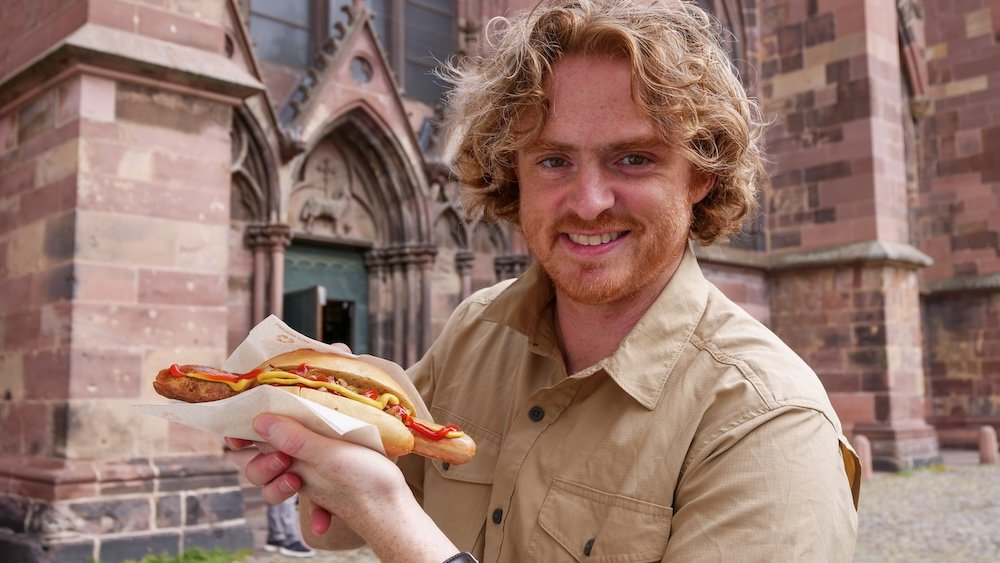
Travel planning can be stressful. You might be juggling train schedules or worrying about the language barrier. Perhaps you’re not sure where to start—should you head for the iconic Münster Cathedral, or explore local breweries first? We’ll tackle those concerns, offering straightforward insights on must-see sites, easy day trips, and how to get around seamlessly.
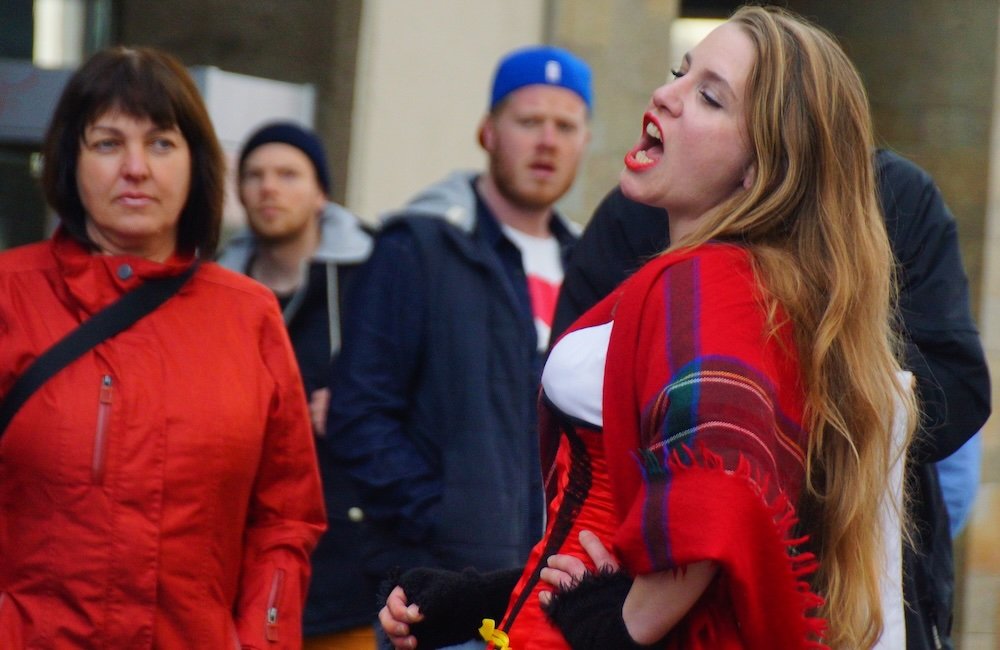
Why Freiburg?
This guide suits a range of travelers. City explorers seeking vibrant squares and historic sites, nature enthusiasts craving a launching pad into the Black Forest, or foodies in pursuit of local wines and hearty German fare. Families, backpackers, couples, and solo wanderers: you’ll all find relevant info here. If you appreciate a city that marries old-world charm Freiburg will tickle your fancy.
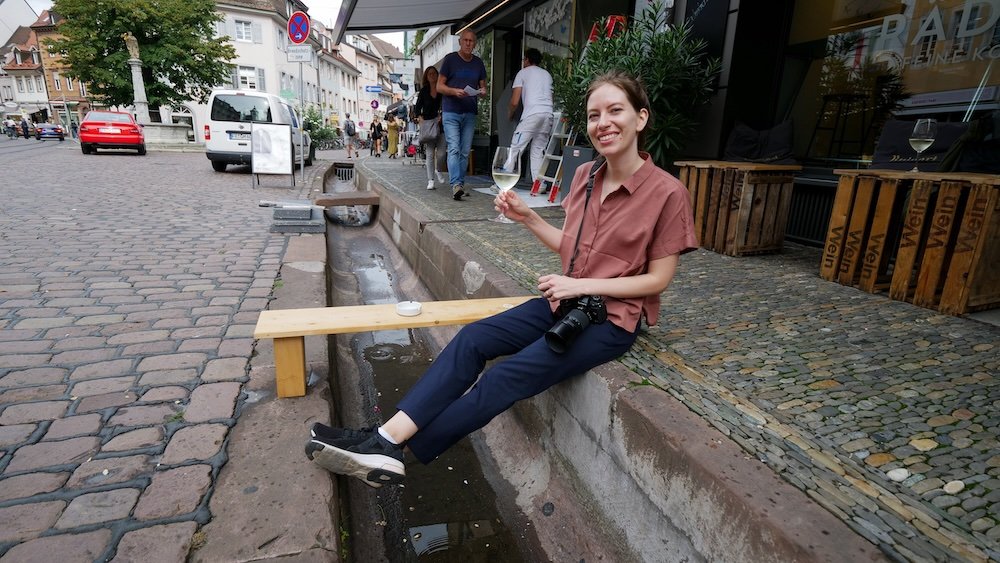
Freiburg might not flaunt the global fame of Berlin or Munich, yet its allure quietly captivates. Picture outdoor cafés set against centuries-old architecture, canals of fresh mountain water trickling beside footpaths, and students biking to class in droves. This city is unapologetically down-to-earth.
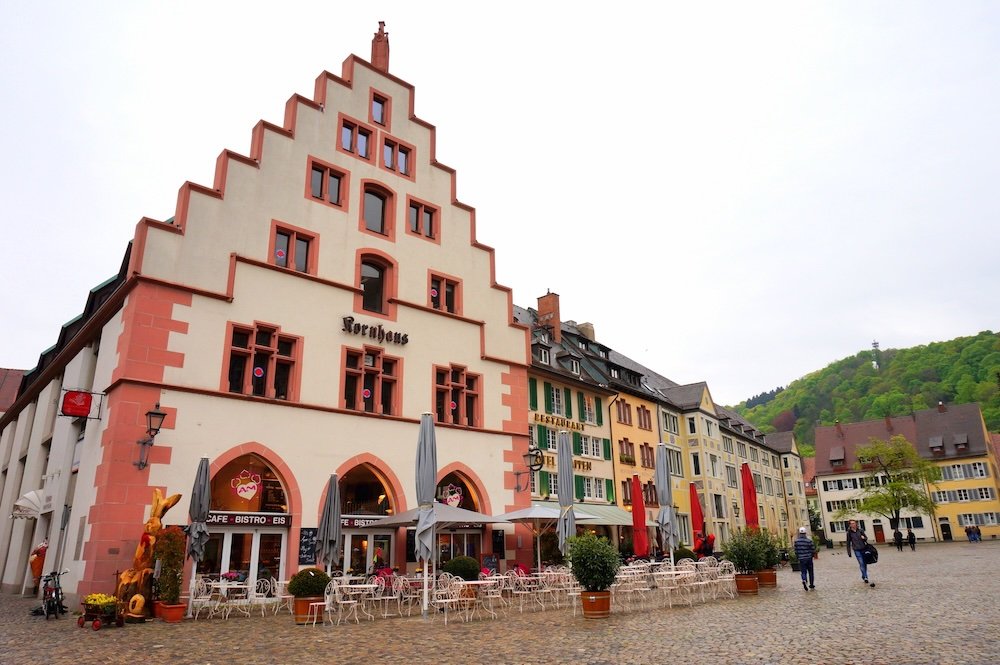
Next up is our rundown of the Top 20 Things To Do in Freiburg. After that, we’ll cover what to eat and drink, tours worth booking, lodging options, day trips, transport logistics, and final parting thoughts. Let’s dive in!
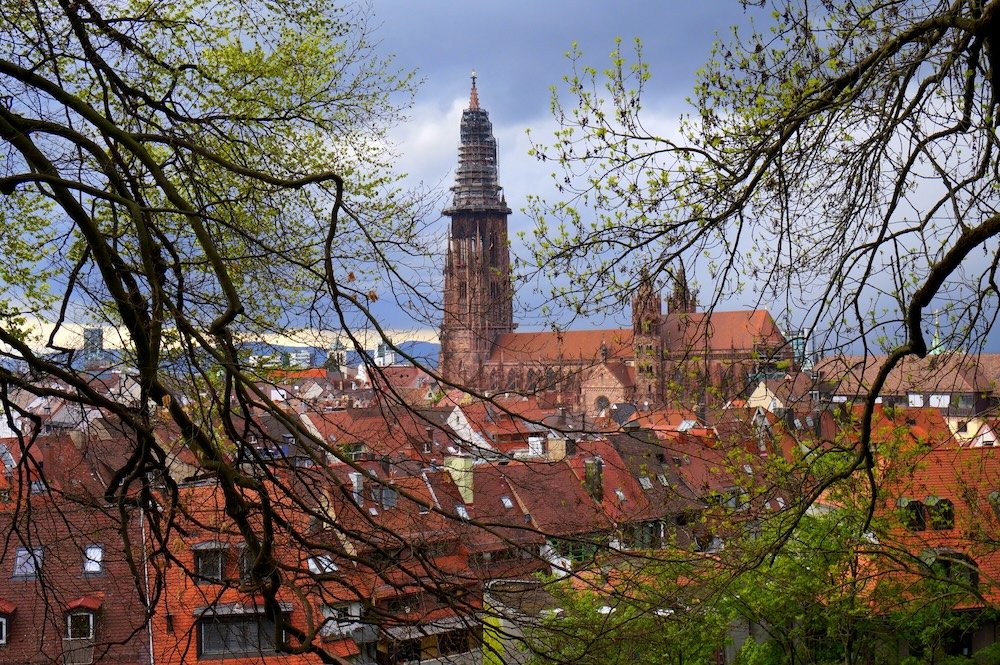
Top 20 Things To Do in Freiburg, Germany For Visitors
Our Travel Video From Freiburg, Germany on Samuel and Audrey YouTube Channel: Nomadic Samuel + That Backpacker as hosts
Freiburg boasts a captivating blend of historical grandeur, lively student energy, and green escapes. Below are 20 must-do experiences.
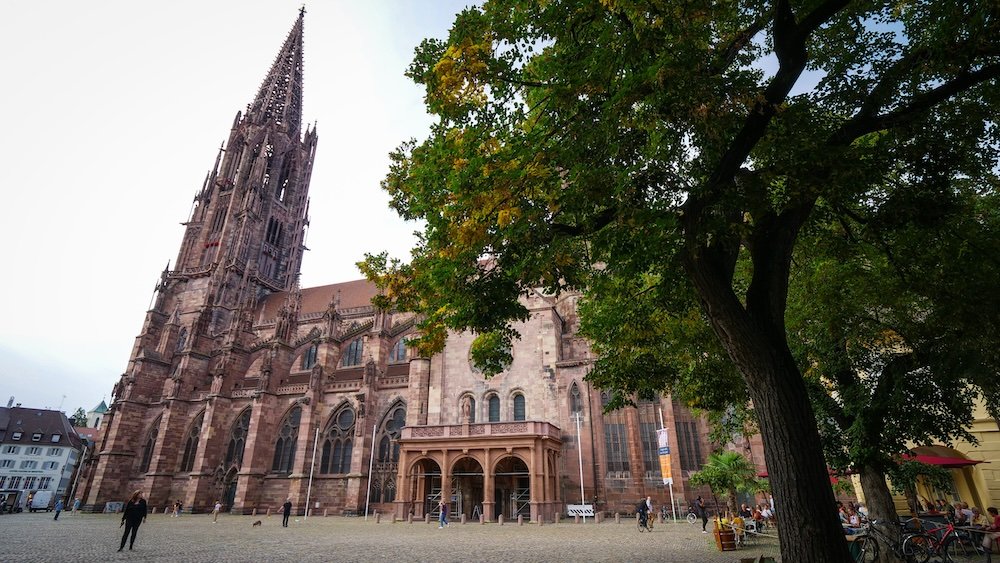
1) Explore the Münsterplatz and Freiburg Minster
The Münsterplatz forms the city’s cultural and architectural heart, anchored by the towering Freiburg Minster with its ornate Gothic spire. Stepping into the square, you’ll sense centuries of history underfoot—once upon a time, trade fairs and medieval gatherings filled this very space. Today, the plaza hosts a bustling market on most mornings, where local farmers and artisans sell fresh produce and artisanal goods. Inside the Minster, stained-glass windows bathe the nave in colored light, while the intricate stone carvings attest to meticulous craftsmanship. Climbing the tower is optional but worthwhile if you want a panoramic sweep of rooftops and surrounding hills. Outside, cafes invite you to linger, cappuccino in hand, as you watch the swirl of city life.
- Daily Market: Check out stalls for bread, honey, cheese, and local produce.
- Tower Ascent: An invigorating climb, so wear comfy shoes for those spiraling steps.
- Architectural Details: Look for gargoyles, elaborate doorways, and centuries-old tombstones.
Tip: Visit early if you want less crowd congestion, especially around the market stands and tower entrance.
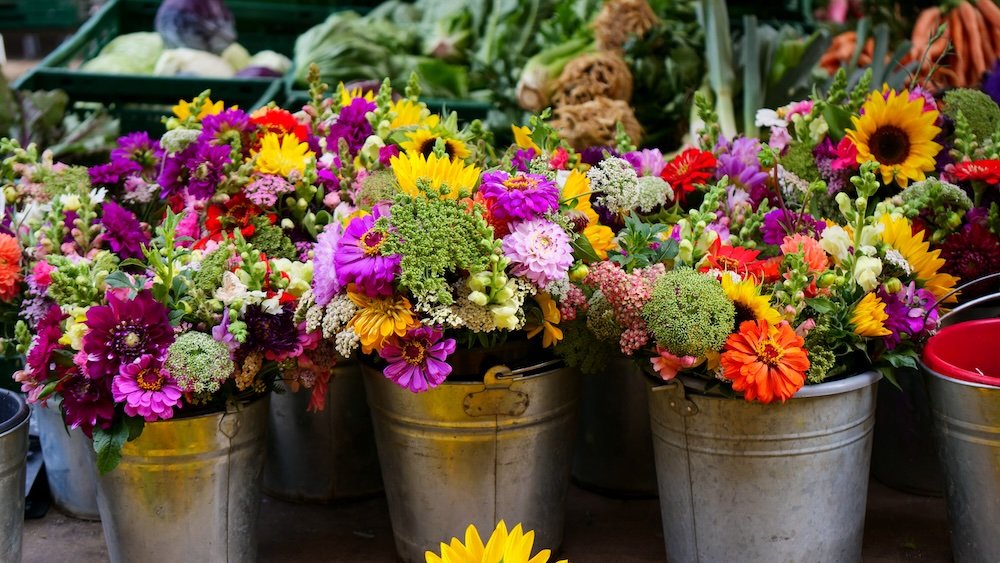
2) Sample Local Wares at the Farmers’ Markets
Freiburg’s farmers’ markets dot the city, but the most vibrant one unfolds daily around the Minster. Here, you’ll find everything from organic vegetables to home-brewed schnapps and multi-hued flower bouquets. The experience offers more than just shopping—it’s a snapshot of local life, complete with lively banter between stall owners and patrons. Some stalls specialize in exotic goods, like imported olives or freshly roasted coffee beans, reflecting Freiburg’s cosmopolitan undercurrent. Wandering between rows of produce, you’ll sense the region’s commitment to sustainability and farm-to-table ethos. Don’t be surprised if the robust aroma of grilled sausages mingles with the sweetness of fresh fruit samples beckoning you over.
- Timing: Markets typically operate 7 AM to 1 PM or 2 PM, so go mid-morning for best selection.
- Payment: Many vendors accept cash only, so carry small bills and coins.
- Souvenirs: Homemade jams, local wines, or handcrafted ceramics make memorable take-homes.
Tip: Try the iconic “Lange Rote” sausage, slathered in mustard, for a quick bite while browsing.
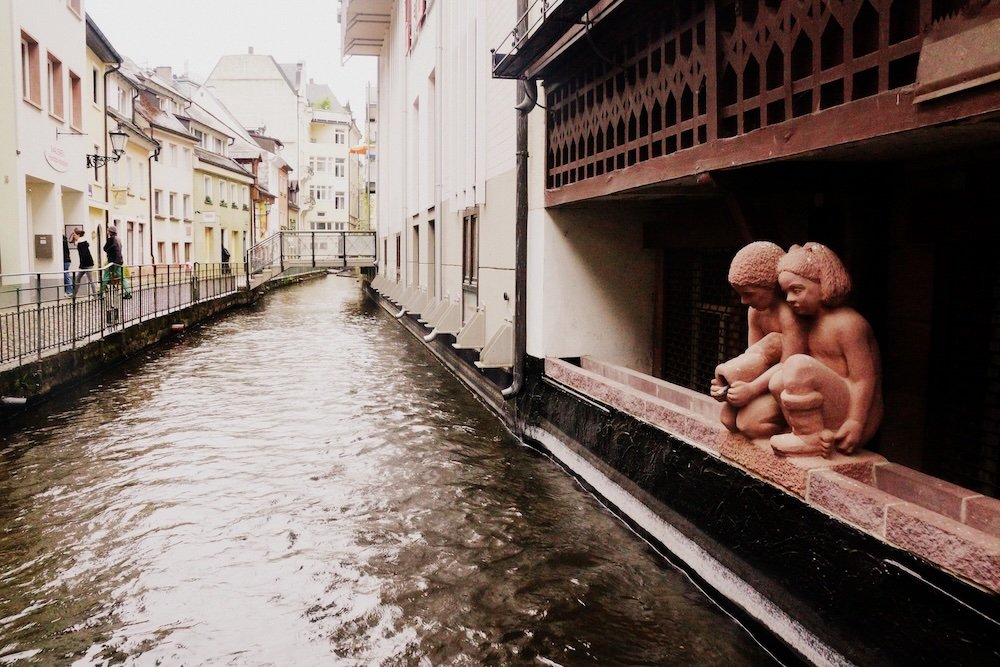
3) Stroll Along the Bächle
Freiburg’s Bächle—small canals running along street edges—infuse the city with unique charm. Fed by the Dreisam River, these shallow channels were once used for fire prevention and livestock watering. Today, they serve as playful, cooling elements in hot summers, with kids often sailing toy boats or splashing about. Walking the Old Town, you’ll see them at nearly every turn, weaving between cobblestones and pastel façades. Stepping inadvertently into one is a local rite of passage, rumored to ensure you’ll marry a Freiburger someday. These gentle rivulets add a whimsical aspect to everyday life here.
- Summer Relief: Dip your feet to beat the heat—just mind your balance!
- Historic Significance: The Bächle date back to medieval times, symbolizing Freiburg’s age-old relationship with water.
- Neighborhood Vibes: Some side streets have Bächle lined with flower pots or ornamental stones.
Tip: Watch your step—it’s easy to be distracted by the city’s beauty and accidentally land with a splash.
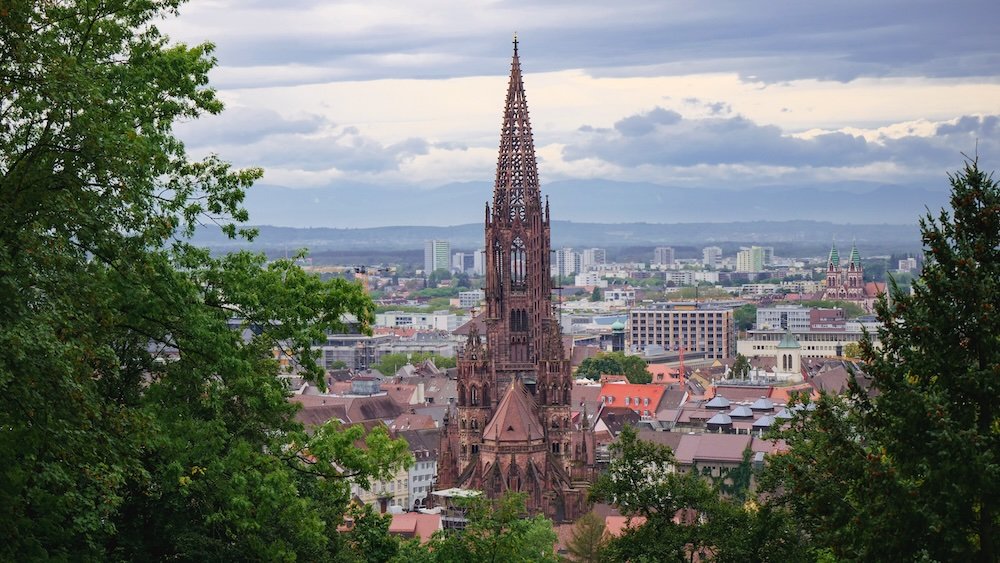
4) Climb Schlossberg for Panoramic Views
Schlossberg, a tree-covered hill rising above the city, rewards hikers with sweeping vistas of rooftops and distant mountains. You can either hike up a gentle trail or opt for the Schlossbergbahn, a funicular that shortens the climb. At the summit, winding paths lead to observation platforms and cozy benches for unhurried breaks. Autumn highlights fiery foliage, while spring unveils fresh blooms and crisp breezes. If you’re lucky, you might spot a local brass band practicing al fresco, or families enjoying a late picnic. Once the sun dips, city lights twinkle below in a soft, romantic glow.
- Fortress Ruins: Remnants of old fortifications scatter the hill, hinting at past military significance.
- Beer Garden: Often you’ll find a scenic beer garden near the top, perfect for a post-hike refresher.
- Photography: Bring a telephoto lens if you want close-ups of the Minster’s spire from this angle.
Tip: Go at sunset for an enchanting panorama bathed in pink and orange skies, ideal for photos.
5) Pop into the Augustinermuseum
The Augustinermuseum, set in a former monastery, houses an eclectic collection of art and historical artifacts spanning the Middle Ages to modern times. Inside, you’ll wander past medieval sculptures, baroque religious paintings, and a trove of stained-glass panels once part of Freiburg’s churches. Contemporary exhibits rotate, ensuring a fresh experience even for returning visitors. Natural light floods the space, lending a warm ambiance that encourages reflection. Museum staff are friendly, often eager to discuss the city’s artistic lineage. For culture lovers, it’s a concise yet enriching window into the region’s creative heritage.
- Highlights: Original gargoyles from the Minster, curated medieval altars, and interactive displays.
- Audio Guide: Available in multiple languages, offering deeper context for each artifact.
- Gift Shop: Sells art prints, specialized books, and local crafts.
Tip: Check the museum calendar for special workshops, as they sometimes host art demos or lectures.
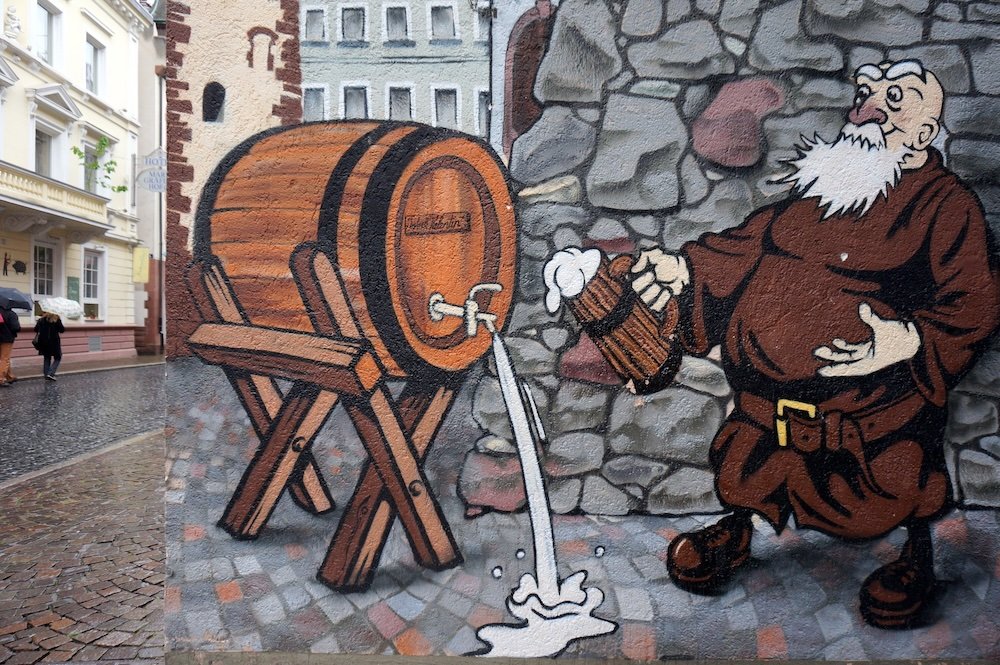
6) Experience the Feierling Brewery
Freiburg’s craft beer scene flourishes at Feierling Brewery, a cozy brewpub in the Old Town. The interior brims with rustic wooden tables, while an adjoining beer garden offers open-air seating under chestnut trees. Their signature brew, Inselhopf, stands out for its refreshing, slightly hoppy taste. You can also pair your pint with simple but savory pub fare—think pretzels, schnitzel, or bratwurst. The crowd often includes students, professionals, and travelers, creating a communal buzz as glasses clink. Even if you’re not a big drinker, the atmosphere alone merits a visit.
- Brewery Tours: Limited times or by appointment—call ahead if you’re curious about the brewing process.
- Seasonal Beers: Keep an eye out for rotating specialties like a dark winter ale or a summer wheat beer.
- Sustainability: Feierling emphasizes eco-friendly production, aligning with Freiburg’s green ethos.
Tip: Grab a seat early on sunny weekends—the beer garden fills up fast with locals unwinding after a busy day.
7) Sample Street Art in the Im Grün District
Freiburg’s artistic streak emerges in the Im Grün district, where alleys and building façades sport vibrant murals. Unlike major metropolises, street art here remains subtle yet impactful, often weaving environmental or community themes. Strolling through, you’ll find hidden corners sporting a kaleidoscope of colors. Some pieces are commissioned, showcasing local talent, while others pop up overnight, reflecting the city’s progressive spirit. Keep your camera ready—each street corner might host a fresh surprise. This scene underscores how Freiburg fuses tradition with modern creative impulses.
- Self-Guided Tours: No official route, so wander spontaneously for the best finds.
- Artistic Styles: Expect everything from cartoon-like designs to surreal collages.
- Local Connection: Many murals reference sustainability and social issues dear to the city’s heart.
Tip: Chat with local shop owners—they can point you to lesser-known murals or recent additions.
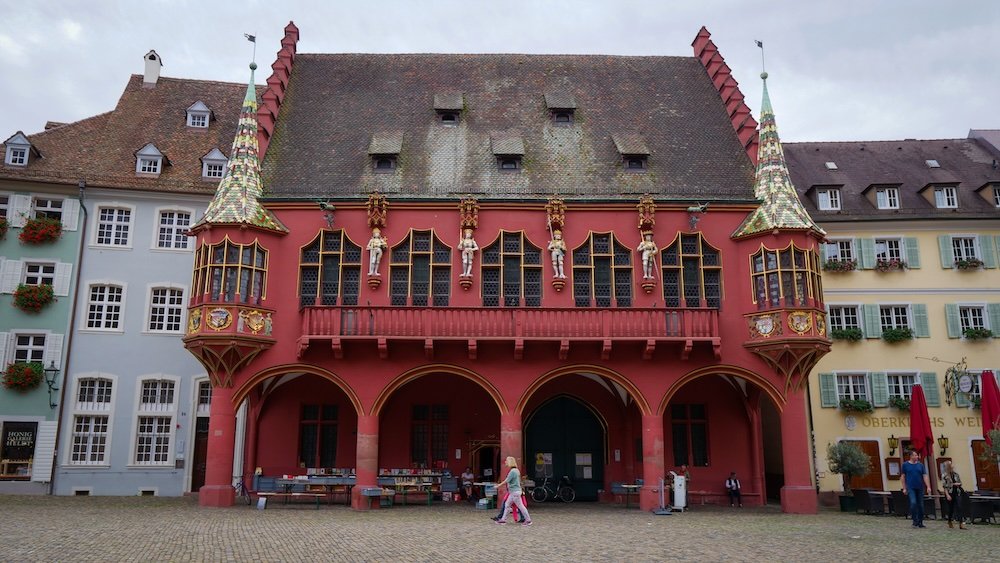
8) Discover the Historisches Kaufhaus
Near the Minster stands the Historisches Kaufhaus, its red façade and ornate decorations testament to the city’s commercial past. Built in the early 16th century, it served as a trade hub for merchants dealing in cloth, wine, and grains. Today, the building hosts ceremonial events and cultural gatherings, but the exterior alone is a visual feast. Statues and coats of arms adorn the façade, hinting at centuries of political alliances and regal visits. Inside, you’ll sometimes find exhibitions showcasing local crafts or photography. Even if you only admire it from the outside, the structure adds a vivid layer to Freiburg’s Old Town charm.
- Colorful Detail: The façade’s warm red hue contrasts with gold trim and black accents.
- Courtyard: Occasionally open for public tours or events—worth checking if there’s something happening.
- Nearby: Surrounded by cafés and shops, perfect for combining with a quick bite or souvenir hunt.
Tip: Visit at dusk when strategic lighting highlights the Kaufhaus’s intricate ornamentation for memorable photos.
9) Hike or Bike Along the Dreisam River
The Dreisam River meanders through Freiburg, lined with well-kept paths that attract joggers, cyclists, and casual strollers. Its shallow waters offer natural cooling spots for sweltering summer days—locals sometimes dip their feet or arrange impromptu picnics. As you wander along the riverbanks, you’ll pass green lawns, art installations, and possibly street musicians. In spring, blossoms dot the landscape, while autumn cloaks everything in russet and gold. The vibe is relaxed, a testament to Freiburg’s environmental mindset and love for accessible public spaces. Whether you prefer a gentle walk or a brisk bike ride, the Dreisam corridor refreshes body and mind.
- Bike Rentals: Many outlets across town rent bikes by the hour or day.
- Local Hangouts: Students often sunbathe or grill in designated areas—an easy way to mingle.
- Evening Ambiance: Streetlamps cast a warm glow, making for a romantic riverside stroll after dusk.
Tip: Carry snacks—the riverside has plenty of scenic benches where you can pause to refuel or just soak in nature.
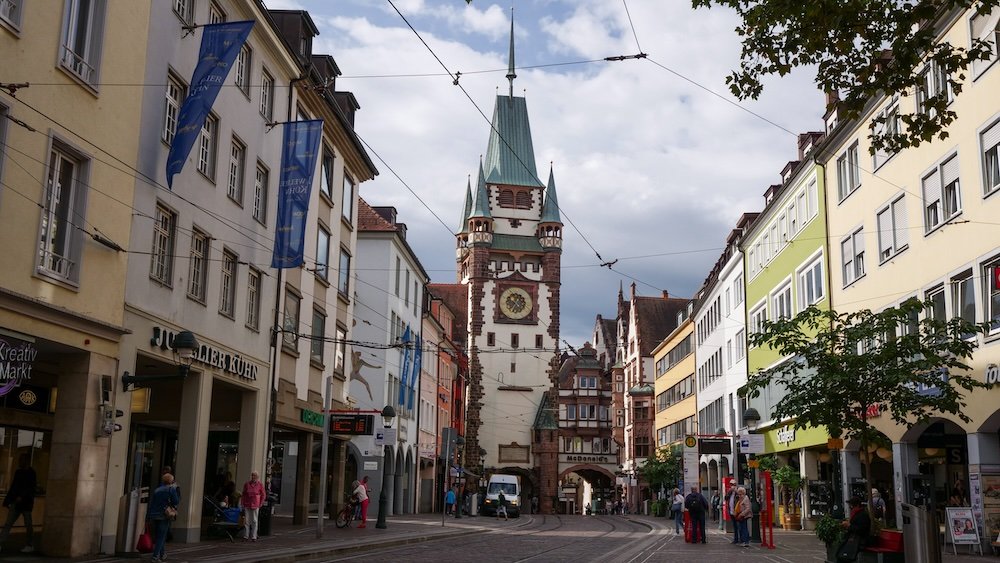
10) Check Out the Schwabentor & Martinstor
Freiburg’s medieval heritage persists in its city gates—the Schwabentor and Martinstor, both steeped in centuries of local lore. The Martinstor, older and simpler, stands near bustling commercial areas, while the Schwabentor is slightly more adorned and leads into charming side streets. Each gate once formed part of the city’s defensive walls, controlling trade and visitor flow. Today, these structures lend the Old Town a romantic flair, especially at dawn or dusk when fewer tourists linger. Plaques provide historical tidbits, helping you imagine knights and merchants passing through centuries ago. Stopping by each gate offers quick lessons in architecture and city planning from another era.
- Photo-Friendly: Angled shots can capture the gates framed by surrounding pastel buildings.
- Nearby Cafés: Perfect for a quick pastry or coffee break.
- Contrasting Styles: Keep an eye out for subtle design differences that reflect each gate’s unique past.
Tip: Walk the route from one gate to the other—it’s a leisurely way to absorb the Old Town’s ambiance.
11) Revel in the Evening Buzz at Bertoldsbrunnen
Bertoldsbrunnen is more than a tram stop; it’s a central meetup spot for locals and travelers alike. Located in the heart of Freiburg, this square buzzes with life, especially as the day transitions into evening. Students gather, street performers strum guitars, and pop-up stands might sell snacks or seasonal items. The statue in the center pays homage to local heritage, bridging the city’s medieval roots and modern vibe. Surrounding streets overflow with bars, restaurants, and shops that extend the excitement well into the night. If you crave people-watching or spontaneous conversation, Bertoldsbrunnen stands ready.
- Tram Hub: Multiple tram lines converge here—handy for exploring different neighborhoods.
- Music & Performances: Summer nights often feature buskers or small pop-up events.
- Historic Context: Named after Berthold III, a local noble, though the modern bustle feels worlds away from feudal times.
Tip: Pause with a drink at an outdoor café table—soak in the city’s pulse before continuing your journey.
12) Admire Contemporary Art at Museum für Neue Kunst
The Museum für Neue Kunst introduces a contemporary angle to Freiburg’s predominantly historical setting. Exhibitions range from modern paintings to multimedia installations, frequently showcasing local and international artists. The layout encourages slow wandering, with pieces spaced thoughtfully for reflection. Some rooms dive into themes like identity, environment, or social critique, aligning with Freiburg’s progressive ethos. Temporary exhibits rotate, ensuring each visit feels distinct. Even if you lean more toward classical art, the museum’s fresh perspective might surprise and inspire.
- Interactive Elements: Certain displays invite viewer participation, so keep an open mind.
- Tour Options: Guided tours provide deeper context—worth it if modern art mystifies you.
- Gift Shop: Sells contemporary art books, prints, and small design objects.
Tip: Check event listings—the museum occasionally hosts talks or film nights complementing current exhibits.
13) Wander the Universität Freiburg Grounds
Freiburg’s student energy pulses from the Universität Freiburg campus, sprinkled across various city sections. Strolling these grounds, you’ll see modern lecture halls juxtaposed with centuries-old academic buildings. Student plazas bristle with cafés offering wallet-friendly meals and vibrant conversation. Academic life spills into the city’s culture, fueling nightlong debates in pubs and an overall creative spirit. Don’t be shocked if you stumble upon an impromptu music performance or public debate around climate activism—this is one of Germany’s greenest, most forward-thinking universities. Observing campus life can offer a deeper understanding of what fuels Freiburg’s youthful soul.
- Library: A sleek, glassy structure that sometimes hosts public art or reading events.
- Cafeteria: Even visitors can enjoy cheap, hearty meals—just brace for student queues at lunchtime.
- Green Initiatives: The campus invests heavily in eco-friendly infrastructure, aligning with the city’s ethos.
Tip: Check student bulletin boards if you’re curious about events, club activities, or festivals open to the public.
14) Savor Street Snacks on Kaiser-Joseph-Straße
The main shopping artery, Kaiser-Joseph-Straße, offers more than just retail therapy. On weekends, food stalls pop up, selling everything from fresh pretzels to global street eats. Amid mainstream fashion outlets, you’ll spot local boutiques and pastry shops, mixing high-end and everyday practicality. Street musicians often fill the air with acoustic tunes, energizing passersby. If you crave a quick nibble, try a hearty slice of Flammkuchen or a sweet pastry shaped like a cinnamon twist. The street’s steady hum reflects Freiburg’s blend of tradition and modern commerce.
- Seasonal Highlights: Christmas markets transform the area in winter, while summer sees extended store hours.
- Retail Mix: Expect chain stores alongside quirky mom-and-pop establishments.
- Lunch Break: Many locals pop into small delis or bakeries for a fast midday bite.
Tip: Explore side alleys branching off the main road; you’ll find hidden cafés, vintage shops, or small art galleries waiting to be discovered.
15) Picnic at Seepark
Just a short tram ride from the city center, Seepark offers a green haven built around an artificial lake. Spread a blanket on the manicured lawn or snag a bench near the shore, watching ducks and rowboats glide by. Summertime sees families grilling, kids playing frisbee, and students sunbathing between classes. A Japanese garden nestles near the water, where meandering paths and wooden bridges inspire tranquil strolling. Cafés dot the park’s perimeter, and sometimes open-air events or small concerts add extra fun. This laid-back spot showcases how Freiburg merges urban living with pockets of nature.
- Activity Options: Paddleboat rentals, mini-golf, or simply lazing under shady trees.
- Flora and Fauna: Look for waterfowl, flowering bushes, and periodic art installations.
- Evening Ambience: Lanterns and reflections on the lake produce a mellow, romantic vibe.
Tip: Bring a reusable bottle—there might be water fountains around, plus you’re supporting Freiburg’s eco-conscious culture.
16) Revel in the City’s Eco-Friendly Initiatives in Vauban
Vauban, a pioneering eco-district on Freiburg’s southern edge, exemplifies sustainable urban living. Low-energy homes, solar panels, and car-free streets define the neighborhood’s layout. Strolling around, you’ll notice green rooftops, communal gardens, and child-friendly play areas reclaiming what would otherwise be parking spaces. Residents often share resources, from electric bikes to tool libraries, reflecting Vauban’s communal ethos. Cafés here champion organic produce, while local co-ops manage small groceries. The district is a living testament to what modern, eco-oriented communities could look like worldwide.
- Guided Tours: Some local groups offer tours explaining Vauban’s urban planning innovations.
- Architectural Details: Houses come in colorful facades, yet collectively meet strict green standards.
- Community Spaces: Car-free plazas host weekend markets or kids’ activities.
Tip: Visit on foot or by tram to fully embrace the car-light philosophy that defines Vauban’s identity.
17) Take a Short Detour to Schauinsland Mountain
Just outside Freiburg, Schauinsland mountain delivers panoramic Black Forest vistas. A cable car (the Schauinslandbahn) soars over tree-lined slopes, depositing you atop this roughly 1,284-meter peak. Once there, hiking routes range from mellow loops to steeper trails dipping into thick woodland. You may stumble upon an old silver mine, reflecting the mountain’s historical significance. On clear days, the Alps might even peek over the horizon, adding a sense of grandeur. For a laid-back approach, sip coffee at a summit café, letting the crisp air and endless sky remind you how small everyday worries can be.
- Cable Car: Europe’s longest loop cable car, ensuring scenic immersion.
- Weather Variability: Temps can be cooler at altitude—pack a jacket or sweater.
- Geological Layers: Informational boards describe the area’s mining past and natural rock formations.
Tip: Arrive mid-morning to dodge crowds and secure a prime seat on the cable car for optimal views.
18) Indulge in a Spa Day in the City
Freiburg, though smaller than Baden-Baden, still boasts wellness centers echoing Germany’s spa heritage. Thermal baths or spa hotels in and around the city cater to those seeking rejuvenation—saunas, saltwater pools, and massage treatments abound. The ambiance is calm, with subdued lighting and plush loungers perfect for a day’s respite from sightseeing. Some spas harness the region’s mineral-rich waters, believed to soothe muscles and revitalize skin. If you want to pamper yourself after days of intense walking or biking, set aside an afternoon. The synergy of professional care and Freiburg’s mild climate can do wonders for your energy levels.
- Package Deals: Look out for combined sauna + massage or thermal + lunch offers.
- Etiquette: Some sauna areas in Germany are textile-free; inquire or read signs if unsure.
- Reservation: Often necessary for specialized treatments—call or book online.
Tip: Combine spa visits with a leisurely evening—the contrast between hot saunas and cool evening air seals the relaxation.
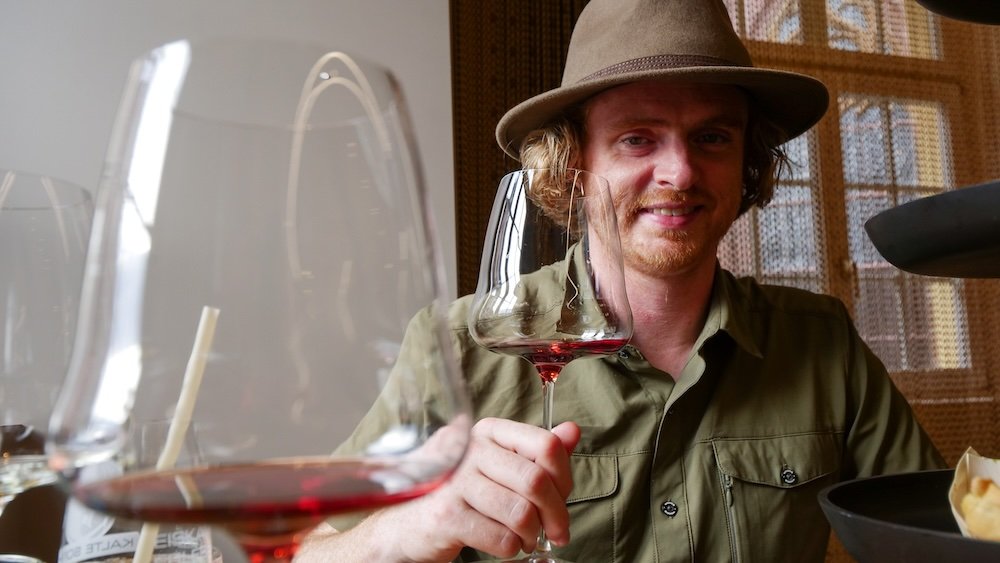
19) Unwind at Local Vineyards or Wine Tastings
The Kaiserstuhl and Tuniberg hills near Freiburg yield vineyards that produce acclaimed wines—Pinot Noir, Riesling, and more. Many wineries host tours or tastings, guiding you through the process from grape to glass. Tidy rows of vines blanket sun-soaked slopes, offering postcard scenery even if you’re only a casual wine fan. Some tasting rooms double as rustic restaurants, letting you pair regional cheese or charcuterie with your chosen bottle. Chatting with winemakers can deepen your appreciation of terroir, climate, and centuries of vineyard tradition. If you’re seeking a laid-back day, a vineyard visit seamlessly blends nature, gastronomy, and quiet reflection.
- Transport: Trains or buses connect to small wine villages; renting a car adds flexibility.
- Season: Harvest time (late summer/early autumn) brims with activity and sometimes festivals.
- Souvenir: Bringing home a bottle or two is a delicious way to remember Freiburg’s flavors.
Tip: Try a guided wine hike—a scenic ramble through vineyards followed by tasting sessions among the vines.
20) Embrace the Nightlife in the Student Quarter
Come nightfall, Freiburg reveals an energetic side, particularly in its student quarter near the university. Bars range from cozy pubs with local brews to modern lounges spinning indie tunes. You’ll likely encounter live music, from acoustic sets to small DJ events, fueling an eclectic vibe. Street food stalls or late-night bakeries keep hunger pangs at bay—imagine fresh pretzels at midnight. The youthful atmosphere fosters easy conversation and spontaneous gatherings. If you crave a taste of the city’s social pulse, the after-dark scene won’t disappoint.
- Bar Hopping: Many spots lie within walking distance—just follow the ebb and flow of laughter.
- Drinks Menu: Try local wines, craft beers, or simple cocktails featuring regional fruit liqueurs.
- Curfew: Freiburg’s nightlife is fairly relaxed, though smaller venues may close earlier on weeknights.
Tip: Strike up a chat with fellow patrons—students often share insider tips for lesser-known bars or upcoming parties.
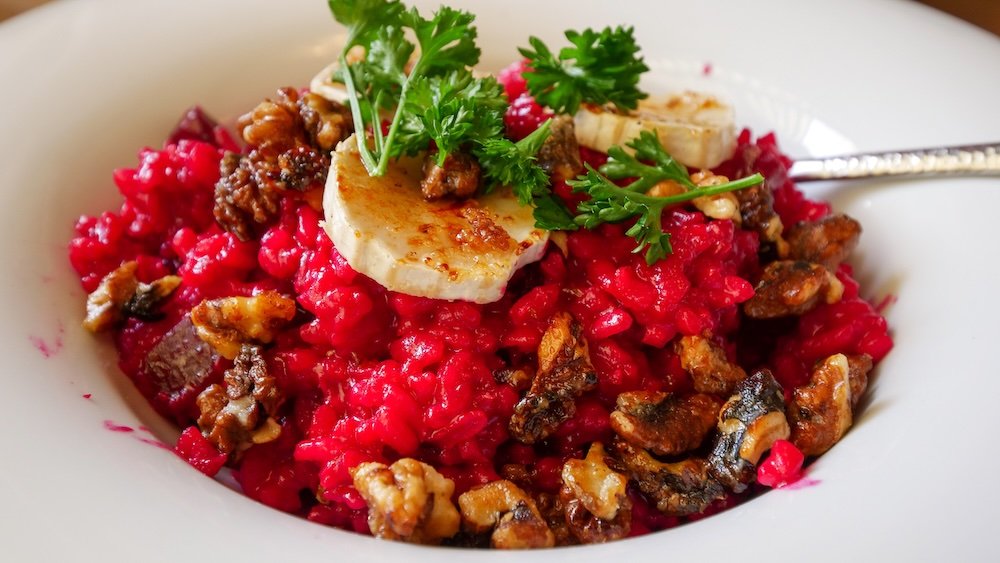
What To Eat and Drink in Freiburg, Germany
Freiburg’s culinary scene balances German staples, fresh local produce, and hints of neighboring France and Switzerland. Below is a snapshot of key dishes, beverages, and eating rituals that define the city’s vibrant things to do for your taste buds.
Local Specialties
- Badische Schneckensuppe (Snail Soup): A nod to French influences, this creamy, herby soup might feel like an adventure if you’ve never tried snails. Chefs typically flavor it with garlic, parsley, and a dash of wine—some local spots proudly list it as a house specialty.
- Flammkuchen: An Alsace-inspired “pizza” with thin crust, crème fraîche, bacon, and onions, often found in small bistros or markets. Crispy edges and savory toppings make it a go-to snack or light meal.
- Maultaschen: Swabian dumplings stuffed with minced meat, spinach, or cheese, reminiscent of ravioli. Enjoy them in broth, pan-fried, or topped with caramelized onions.
Tip: Order a half-portion if you want to sample multiple items, as local servings can be quite generous.
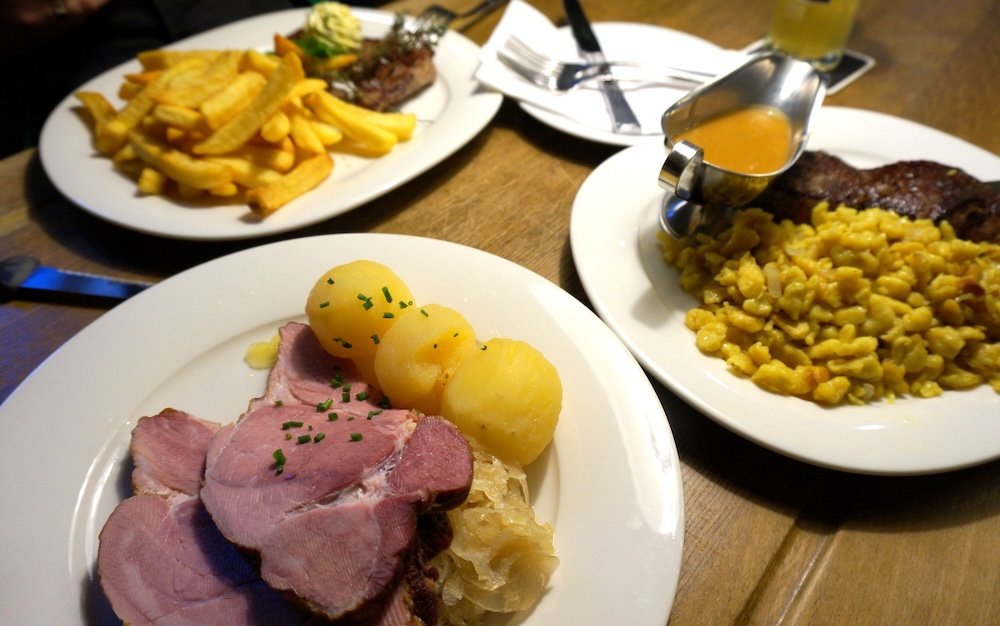
Street Food & Market Snacks
Freiburg’s daily market scene around the Münster fosters easy-to-grab bites. Grilled sausage stands, known for the Lange Rote, draw lines of hungry patrons. Meanwhile, produce stalls sell colorful fruit, perfect for a quick energy boost. Keep an eye out for local cheese, often sold in small wheels with tangy, aromatic flavors. Some stands peddle fresh juices or elderflower sodas, reflecting the region’s orchard abundance. With minimal fuss, these market snacks let you graze at your own pace while enjoying the city’s street bustle.
Tip: Arrive early if you want the widest selection—vendors often sell out of popular items by midday.
Sweet Treats
- Black Forest Cake: The iconic Schwarzwälder Kirschtorte is practically a local celebrity—layers of chocolate sponge, cherries, whipped cream, and kirsch. Cafés fiercely debate who does it best, so you may need to sample a few.
- Breisgauer Kirschplotzer: A regional cherry bread pudding that’s sweet, sticky, and soul-warming.
- Soft Pretzels: Not purely sweet, but the salted exterior pairs amazingly with a dab of honey or sweet mustard if you want a twist.
Tip: Pair Black Forest Cake with a robust coffee—bitterness cuts the cake’s sweetness for a balanced dessert.
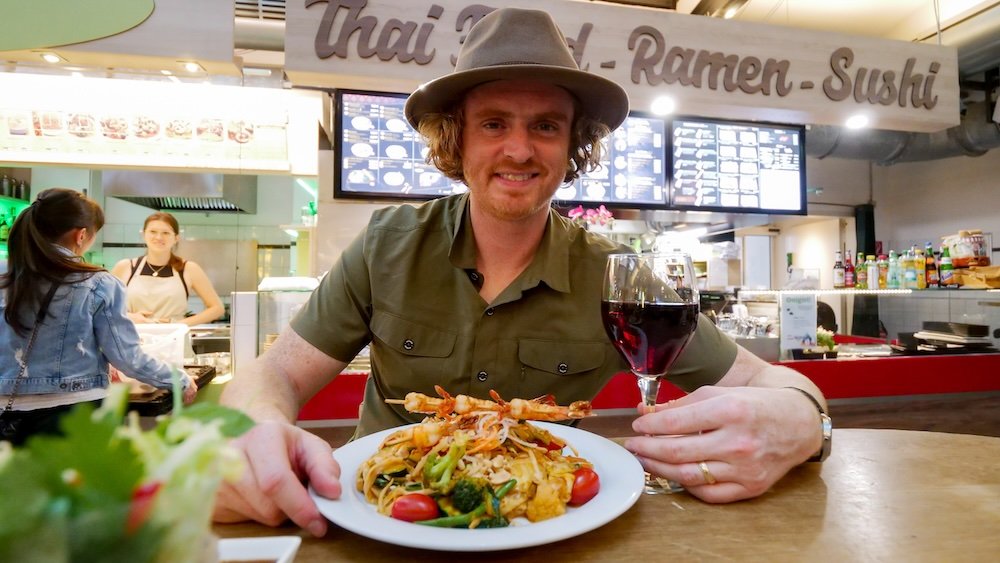
Drinks
- Wine: Freiburg rests near prime vineyard areas like Kaiserstuhl, famed for Pinot Noir, Pinot Gris, and Riesling. Wine bars and bistros often feature local vintages on rotating menus.
- Beer: Craft breweries flourish, but classic German pils or wheat beers remain staples. The local Feierling Brewery is a standout.
- Schnapps: Kirschwasser, a cherry brandy, or fruit schnapps (Pear, Plum) reflect orchard yields. Locals sip them neat after meals.
Tip: Check wine-tasting schedules—some bars or wineries host special tasting nights, a fun way to explore different varietals.
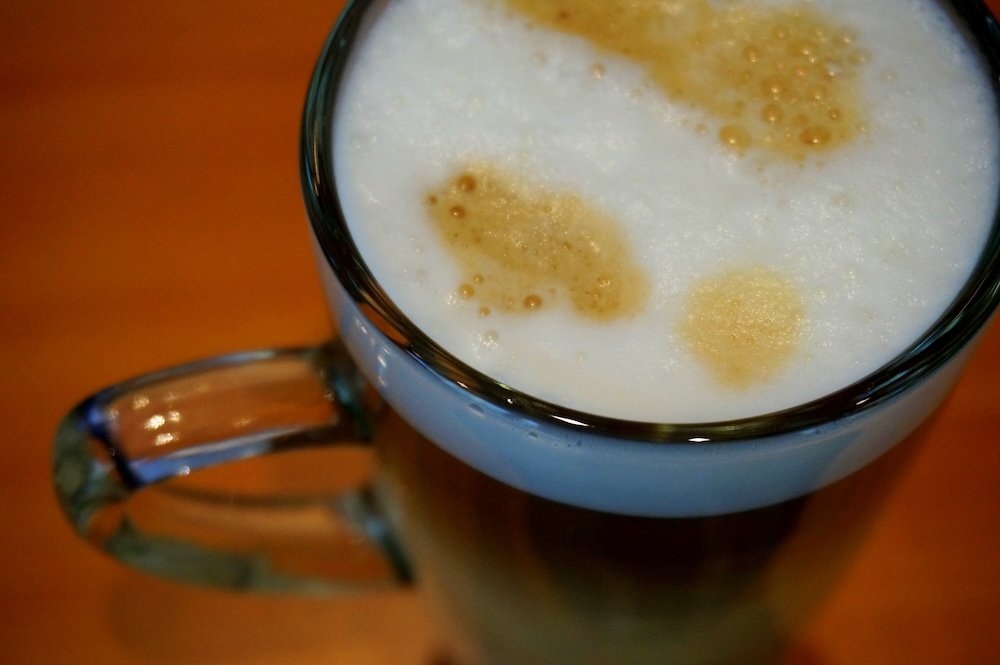
Café Culture
Freiburg’s student population and general love for leisure underpin a robust café scene. You’ll find snug corners to linger over cappuccinos or flat whites—be it in the Old Town or near the university campus. Pastries often grace these coffee tables, with apple strudel or fruit tarts in seasonal rotation. Many cafés also double as co-working spaces or small art galleries, reflecting the city’s creative pulse. If you want a relaxed break from sightseeing, a midday café stop is a perfect buffer.
Tip: Grab an outside table if the weather is decent—watching passersby is half the joy.
Eco & Organic Focus
Locals value sustainability, so organic options are abundant. Many restaurants partner with local farms for vegetables, dairy, and meat. Vegan and vegetarian menus appear widely, ensuring inclusive dining for those with dietary restrictions. Weekly farmers’ markets emphasize zero-waste packaging, while some cafés discount your coffee if you bring a reusable cup. This eco-conscious layer underscores Freiburg’s identity, letting you eat well and feel good about reducing your footprint.
Tip: Inquire about “Bio” labels—they signal organic certification in Germany, guaranteeing certain production standards.
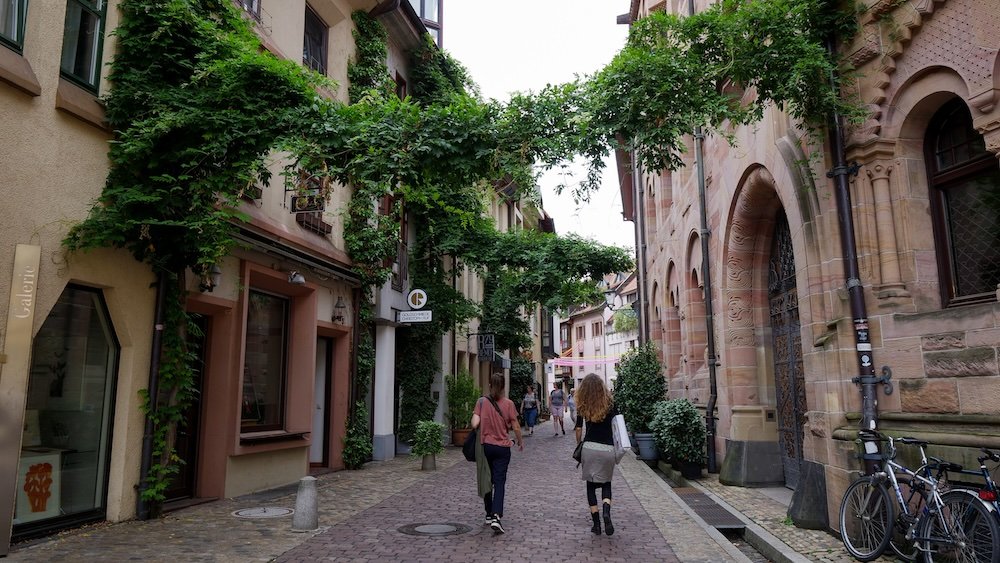
Tours For Visitors To Freiburg, Germany
Structured tours can enrich your Freiburg experience, offering insights that self-guided wanders might miss. Below are examples of things to do with expert guides or specialized activities that suit diverse interests.
1) Old Town Walking Tours
Old Town tours highlight Freiburg’s medieval roots, taking you past the Münster, cobbled plazas, and the city’s distinctive Bächle canals. Knowledgeable guides share anecdotes about centuries of trade fairs, religious events, and the local forging of the city’s identity. You’ll learn how the Minster survived multiple wars or how the city gates once controlled commerce. Some tours include stops at hidden courtyards or local businesses that have thrived for generations. If you’re tight on time, a two-hour guided walk hits the major landmarks while offering commentary you won’t find in a standard brochure. Expect small groups, so you can pepper the guide with questions about everything from architecture to local folklore.
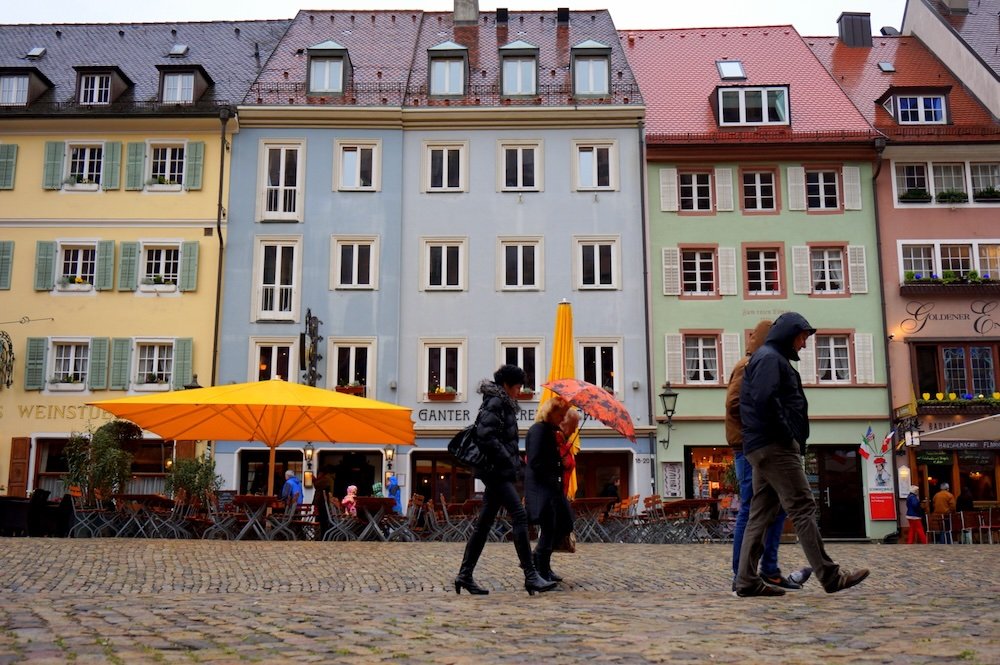
- Booking: Official tours typically depart from the Tourist Information office near the Rathaus.
- Languages: English, German, and sometimes French or Spanish.
- Group Size: Usually 10–20 people for a comfortable stroll.
Tip: Ask if the guide covers modern innovations—Freiburg’s sustainability ethos often features in updated scripts.
2) Culinary Tours
Freiburg brims with flavors, and culinary tours let you sample them all—street food bites, artisanal cheeses, local wines, and sweet treats. Some tours start at the daily market, where vendors hand out samples of sausages, bread, or fruit. Others guide you through quaint eateries, each stop unveiling a different aspect of Baden cuisine. You’ll likely learn about the region’s wine culture too, tasting a crisp Riesling or a fruity Spätburgunder. Between sips and bites, guides explain the city’s farm-to-table ethos, local produce cycles, and storied recipes passed down through families. It’s an educational feast that keeps you happily full.
- Tour Length: Usually 2–4 hours, covering multiple stops.
- Additional Extras: Some tours wrap up with a cooking demo or a souvenir item, like a small jar of regional jam.
- Dietary Needs: Inform operators ahead—most can accommodate vegetarians, gluten-free diets, etc.
Tip: Wear comfy shoes and come hungry—these tours are all about walking, tasting, and possibly unbuttoning your jeans by the end.
3) Bike Tours
Freiburg’s love affair with bicycles makes guided bike tours a natural fit. A local guide leads you through leafy boulevards, the Dreisam River path, and lesser-known residential areas with unique architecture. You’ll also skirt university grounds and possibly climb modest slopes in the outskirts for sweeping city views. With frequent breaks, the tours highlight both major points of interest and everyday life—like how locals seamlessly mix eco-friendly commuting with city errands. Electric bike options sometimes exist if you’re wary of uphill stretches. By the end, you’ll see how ingrained cycling is in Freiburg’s identity.
- Rental Included: Operators typically supply bikes, helmets, and safety instructions.
- Route Difficulty: Mostly moderate, but check descriptions for route length or hill segments.
- Pacing: Generally relaxed, letting you snap photos or ask questions at scenic stops.
Tip: Bring water—summer can get toasty, and you’ll appreciate a hydration break while pedaling around.
4) Wine & Vineyard Tours
Less than an hour from Freiburg lie vineyards in the Kaiserstuhl or Markgräflerland, perfect for half-day or full-day wine tours. Operators shuttle you to hillside domains where local winemakers discuss grape cultivation, terroir, and the complexities of fermentation. Tastings follow, featuring Pinot Noir, Müller-Thurgau, or aromatic Whites. Some tours include vineyard walks, letting you see the vines up close and relish the breezy, sun-soaked vistas. Often, a rustic meal or snack accompanies the wine flights, harmonizing flavors with the region’s seasonal bounty. If you’re a grape enthusiast or a curious novice, these tours deepen your appreciation for Freiburg’s viticulture ties.
- Transport: Typically minivan or coach from central Freiburg.
- Group Atmosphere: Wine tours can be social, so expect friendly chatter among participants.
- Extras: Many tours wrap up at a scenic viewpoint or small village for free time.
Tip: Buy a bottle on-site if you find a label you love—some vineyards offer discounts for participants.
5) Eco-Focused Tours (Vauban or Green City)
For a deeper look at Freiburg’s green innovations, eco-centric tours shine a light on solar-powered homes, car-free zones, and sustainability projects. Vauban is a common focal point: a model district championing energy efficiency, community spaces, and creative architecture. Guides explain how communal living experiments here, influencing everything from neighborhood design to child-friendly streets. These tours often visit local co-ops, bike-sharing programs, or microfarms that underscore Freiburg’s eco-lifestyle. It’s an eye-opener for visitors wanting to glean practical tips for greener city living.
- Duration: 2-3 hours, typically a walking or biking format.
- Audience: Students, architects, city planners, or anyone passionate about environmental solutions.
- Language: English tours might be less frequent, so check scheduling.
Tip: Stay curious—operators love questions on policy, daily life, or how to replicate these ideas back home.
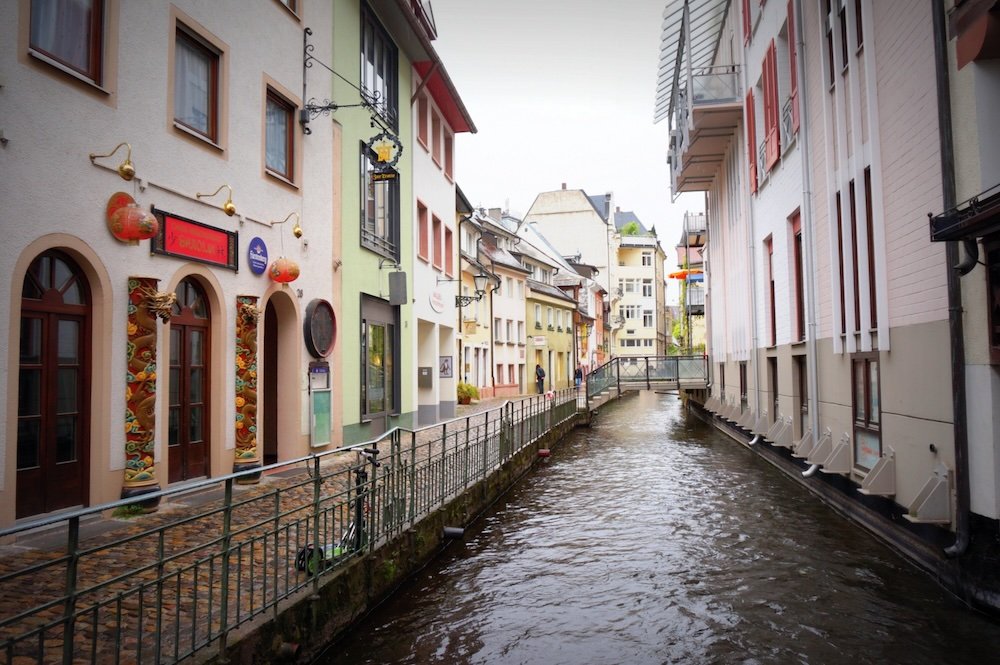
Freiburg Accommodations Guide: Hotels, Guesthouses and Hostels
Your lodging choice can color your Freiburg experience, influencing how easily you access things to do and how relaxed you feel after a day’s sightseeing. From urban luxury to rustic charm, the city’s diverse range of accommodations reflects its cultural fusion of tradition and modernity. Here’s a rundown.
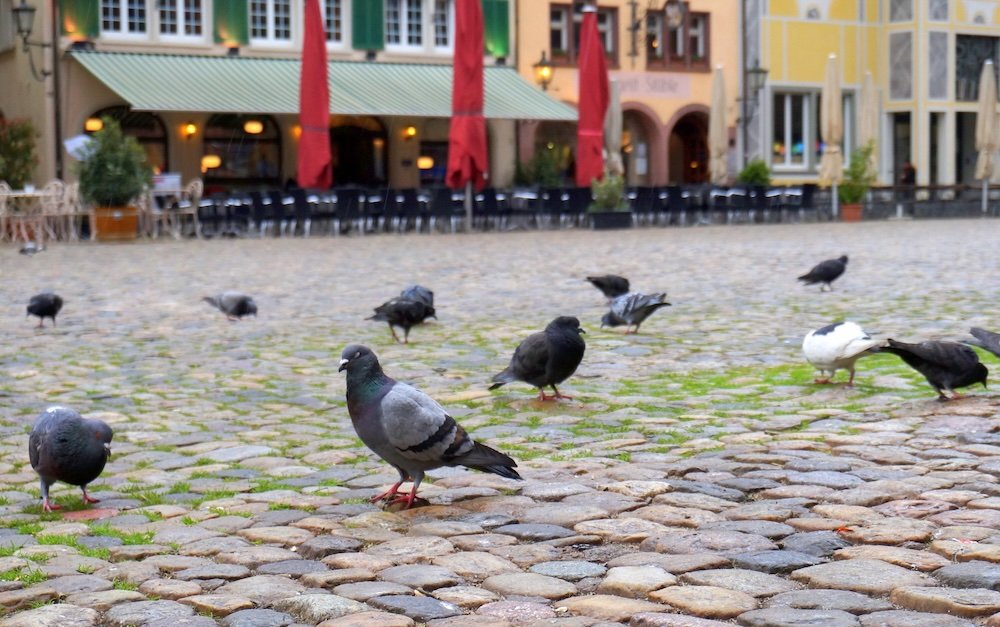
Hotels
Freiburg’s hotels span from sleek business stays near central transit hubs to boutique hideaways in the Old Town’s cobbled lanes. You’ll find global chains offering consistent amenities—24-hour front desks, gyms, polished lobbies—plus smaller, high-end properties featuring local design elements. Many incorporate sustainable practices, from energy-efficient lights to on-site bike rentals, echoing the city’s green ethos. Some star-tier hotels boast rooftop terraces or spa facilities, perfect for unwinding after a day’s walking or biking. Expect warm, multi-lingual service, as Freiburg sees a steady stream of international visitors. Prices peak around popular festivals or summer weekends, so book early if you’re traveling then.
- Prime Locations: Look near the Hauptbahnhof (main station) or the Old Town for easy orientation.
- Price Range: Mid-tier rooms might start around €80–€120 per night, while upscale can reach €150–€250+ in peak times.
- Breakfast: Often buffet-style, including local breads, cheeses, fruit, and maybe Black Forest ham.
Tip: Check for seasonal deals—some hotels discount rates during winter months or mid-week stays, saving you a chunk.
Guesthouses (Gasthäuser) and B&Bs
For a cozier, more personal vibe, consider a guesthouse or bed-and-breakfast. Typically family-run, these spots offer fewer rooms, each with unique decor that often nods to the Black Forest region. You’ll likely enjoy direct interaction with owners who can advise on everything from best hikes to local pubs. Breakfast is commonly homemade—think fresh-baked bread, local jams, and piping-hot coffee. Interiors vary, from rustic wooden beams to modern minimalist flair, but the ambiance usually remains informal and welcoming. If you’re seeking quiet neighborhoods or prefer a “home away from home” environment, a guesthouse might be your best bet.
- Room Features: Some come with balconies overlooking gardens or streets, adding to the charm.
- Pricing: Often comparable to mid-range hotels, though can be cheaper off-season.
- Dining: Some Gasthäuser double as restaurants, letting you sample local cuisine conveniently.
Tip: Book ahead if you want a top-rated guesthouse—limited rooms fill quickly, especially in spring and fall.
Hostels
Budget-conscious travelers or social butterflies might gravitate to hostels in Freiburg. Options cluster near the train station or university district, providing easy access to nightlife and major sights. Dorm rooms keep costs low, but many hostels also offer private rooms if you want more privacy. Communal kitchens encourage travelers to share meals, fostering camaraderie and cost savings on dining out. Staff are typically in-the-know about free events, cheap eats, and local hiking routes. It’s an upbeat environment where you can easily make friends from around the world.
- Cost: Dorm beds start around €20–€30, private rooms can hit €50–€70.
- Facilities: Expect lockers, shared bathrooms, and possibly a lounge or bar area.
- Atmosphere: Younger vibe, but often families or older travelers pick hostels for the communal aspect.
Tip: Bring earplugs—a snoring roommate or party crowd can interrupt light sleepers.
Booking & Practical Tips
- Peak Seasons: Summer, Easter break, and around Christmas markets see a rush—book a few months out if possible.
- Konus Card: If lodging outside Freiburg in the Black Forest zone, you might get free regional transport.
- Cancellation: Terms differ widely—read the fine print to avoid last-minute surprises.
Tip: Combine lodging with local experiences—some hotels or guesthouses partner with tour operators to provide package deals.
Our Travel Video From The Black Forest, Germany on Samuel and Audrey YouTube Channel: Nomadic Samuel and That Backpacker hosting
Day Trips From Freiburg, Germany
Freiburg’s prime location near the Black Forest and the borders of France and Switzerland makes it a springboard for memorable day trips. If you’ve checked off your local things to do and are itching for fresh horizons, consider these easy excursions that expand your cultural and scenic repertoire.
1) Colmar, France
A quick train or bus ride across the Rhine leads to Colmar, a fairy-tale Alsatian town with half-timbered houses and blossoming canals. Known as “Little Venice,” Colmar enchants visitors with its pastel-hued facades, cobbled lanes, and whimsical boat rides along the Lauch River. Strolling around, you’ll spot countless patisseries selling macarons and Alsatian tarts, reflecting the area’s gastronomic heritage. The Unterlinden Museum intrigues art fans, hosting the famous Isenheim Altarpiece. Even just a few hours let you savor French flair before heading back to Freiburg. Don’t forget to sample a local Crémant d’Alsace or a crisp Riesling for the full experience.
- Travel Time: About 45 minutes by train or a bit over an hour by car.
- Best Season: Late spring or early autumn sees moderate crowds and mild temps.
- Currency: Euros, same as Germany, so no conversion hassles.
Tip: Check schedules for an early morning train, maximizing your day in Colmar’s bustling old quarters.
2) Basel, Switzerland
Another border hop, Basel melds Swiss precision with a vibrant cultural tapestry. The medieval Old Town captivates with winding streets, while the Rhine carves a scenic route dividing the city. Art enthusiasts flock to the Kunstmuseum or Foundation Beyeler, housing pivotal works from classic to contemporary masters. Meanwhile, the Tinguely Museum displays mechanical sculptures that fuse whimsy and social commentary. If you’re craving some retail therapy, upscale boutiques and Swiss watch shops abound. Before returning to Freiburg, sample Swiss chocolate or a cheesy fondue for a gastronomic goodbye.
- Transport: Roughly an hour by direct train from Freiburg’s Hauptbahnhof.
- Budget: Switzerland can be pricier—factor in costs for dining or museum entries.
- Distinct Sights: The Munster (cathedral) area offers panoramic river views.
Tip: Carry a card that works internationally—some small shops still prefer Swiss francs over euros.
3) Lake Titisee & Schluchsee
Though partially within Freiburg’s orbit, these lakes merit their own day trip if you want a deeper experience. Titisee bustles with boat rentals and waterfront cafés, while bigger Schluchsee offers more tranquil, wide-open spaces for water sports or long forest hikes. Catch a train or bus early, and spend the day kayaking, swimming, or strolling lakeside paths. You could combine a half-day at each lake, sampling local dishes like grilled fish. Crisp mountain air, scenic pine stands, and shimmering waters beckon all who need a break from city bustle.
- Gear: Bathing suits, towels, and comfy shoes for exploring the footpaths.
- Boat Rentals: Rowboats, paddleboats, or electric boats abound—fun for families or couples.
- Off-Peak: Weekdays or shoulder seasons see fewer crowds, ensuring more serene exploration.
Tip: Pack a picnic—the lakesides feature numerous picnic benches with postcard-perfect backgrounds.
4) Strasbourg, France
A bit farther than Colmar but still feasible, Strasbourg pairs grand cathedrals with a strong EU identity (it’s home to the European Parliament). The Cathedrale Notre-Dame stands tall, flaunting a gothic rose window and a mesmerizing astronomical clock. Boat tours along the Ill River reveal the city’s UNESCO-listed old quarter, La Petite France, brimming with half-timbered homes and romantic footbridges. Culinary delights range from tarte flambée to hearty choucroute garnie, bridging French and German gastronomic ties. If politics or architecture intrigue you, the modern EU buildings contrast starkly with the old-town charm. A day here blends historical depth, legislative significance, and gastronomic indulgence.
- Journey: About 90 minutes by train from Freiburg or a similar drive time.
- Winter Bonus: The famous Christmas market lights up the city from late November onward.
- Language: Primarily French, though bilingual signage helps navigation.
Tip: Book timed tickets if you plan to climb the cathedral tower on a busy weekend—it’s popular.
5) The High Black Forest (Hochschwarzwald)
If you’re already in Freiburg, the Hochschwarzwald or High Black Forest might be your next-level nature fix. Feldberg, the region’s highest peak, entices hikers in summer and skiers in winter. A cable car lifts you near the summit, unlocking panoramic views of lakes, rolling forests, and possibly the Alps on clear days. Cozy mountain huts serve schnitzels or warm spiced wine, fueling further exploration. You might pass grazing cows, log cabins, or hidden waterfalls along well-marked trails. This is the Black Forest in its purest form: majestic, evergreen, and refreshingly unspoiled.
- Transport: Buses or the regional train network connect small villages; a car adds flexibility.
- Activities: Hiking, mountain biking, paragliding in warmer months; skiing or snowshoeing in winter.
- Rural Delights: Stop by a farm shop for homemade cheese or jam.
Tip: Target off-peak times if you dislike crowds—weekday visits or outside major holiday periods guarantee quieter paths.
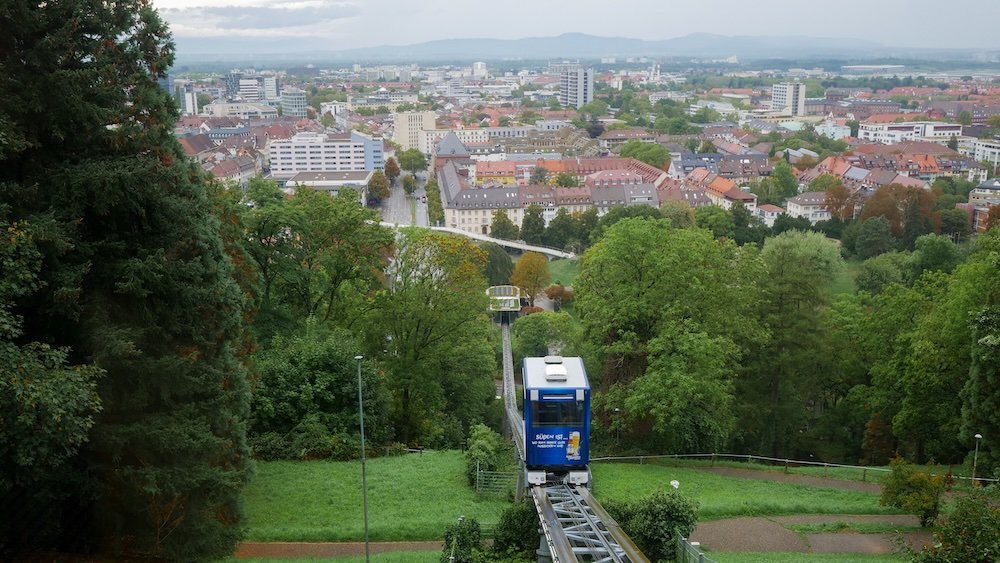
Freiburg Transportation Guide
Navigating Freiburg is easier than you might expect. The city’s compact size and well-designed transit infrastructure facilitate smooth movement. Here’s a breakdown of transportation options to match different budgets and preferences.
Trains & Trams
Freiburg’s Hauptbahnhof anchors rail connections across Germany and beyond, including direct links to Basel or local stops like Titisee. Deutsche Bahn (DB) trains are frequent, comfortable, and fairly punctual. Within the city, the tram system is vital. Lines crisscross from the Old Town center to neighborhoods such as Vauban, making it easy to hop from your hotel to popular sites. Trams run roughly every 7-10 minutes in peak times, tapering to 15-20 minutes off-peak—check posted timetables. Tickets are purchased at platform machines or on apps, validated before boarding to sidestep fines.
- Network Pass: The RegioKarte or day pass offers unlimited rides on trams and buses—handy if you’re exploring multiple spots.
- Night Service: Late-night or weekend schedules might be reduced, so confirm last tram times.
- Eco Focus: Many locals rely on trams or bikes, reflecting Freiburg’s green identity.
Tip: Grab a free map from the tourist office to see tram routes plus major landmarks.
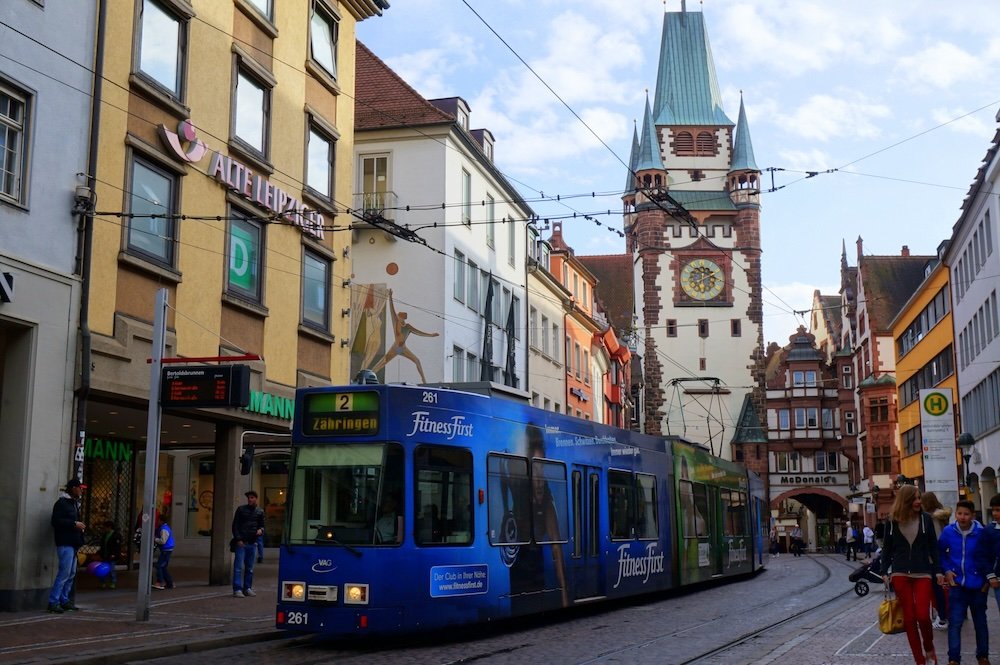
Buses
Where the tram rails stop, buses pick up the slack, especially for suburban routes or reaching outlying attractions. Bus frequencies mirror tram schedules, with more limited service on Sundays or late nights. Electronic displays at stops show next arrival times, a boon if you’re new to the system. Some lines even run through scenic areas, doubling as mini-sightseeing rides. If you’re heading deeper into the countryside (e.g., to a day hike in the Black Forest), you might rely on a combo of train+bus. Similar to trams, buy tickets at machines or with the driver (small change helps) and validate if needed.
- Integration: Tickets typically cover both bus and tram within specific zones.
- Real-Time Tracking: The VAG Freiburg app or DB Navigator can show live bus times.
- Transfers: A single ticket usually remains valid for a time window, so transferring is seamless.
Tip: Avoid rush hour around 8-9 AM and 5-6 PM if you dislike crowded vehicles.
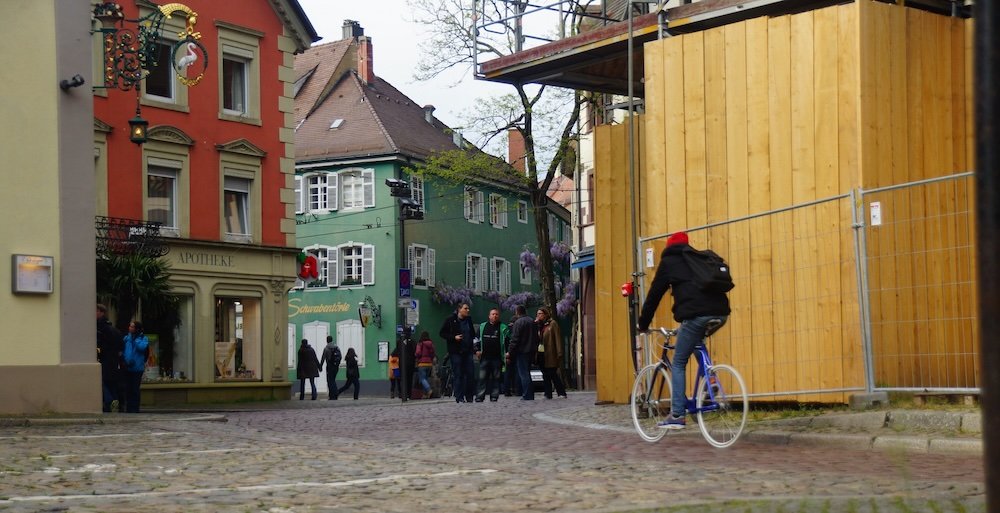
Bikes
Freiburg is a cycling mecca. Flat city streets and abundant bike lanes entice students, professionals, and tourists to pedal around. Rental shops near the Hauptbahnhof or in the Old Town let you pick up a bike short-term. Some hotels or hostels also offer rentals. Riding along the Dreisam River path or through the Old Town’s alleys can be both scenic and practical, cutting travel times between attractions. Be mindful of pedestrian areas where biking might be restricted; watch for signage or ask a local. Helmets aren’t mandated by law but are wise to wear.
- Parking: Dedicated bike racks abound; bring a sturdy lock.
- E-Bikes: Perfect for tackling mild hills or exploring the outskirts with minimal sweat.
- Etiquette: Ride on designated lanes or roads, signal turns, and respect traffic lights.
Tip: Check “Fahrradverleih” if online searching—this term indicates a bike rental shop in German.
Taxis & Rideshares
Taxis cluster near the train station, popular squares like Bertoldsbrunnen, or you can phone for a pick-up. They’re reliable but pricier than public transport—useful for late-night returns or heavy luggage days. Rideshare apps such as Uber exist but remain less common than in bigger German cities. Payment in taxis is usually cash, though some accept cards—confirm before starting your ride. If you’re traveling regionally or to smaller villages, scheduling a taxi in advance is prudent, as drivers may not roam those areas frequently.
- Fares: Start around €3–€4 plus a per-kilometer fee, quick to add up over longer distances.
- Tip: It’s customary to round up to the next euro or add 5-10%.
- Safety: Official taxis have a “TAXI” sign and numbered license—avoid unmarked vehicles.
Tip: Keep the local taxi number saved on your phone, especially if you plan late outings in quieter neighborhoods.
Driving & Parking
A rental car opens up day trips to the Black Forest or neighboring countries at your own pace. Major agencies operate at the train station and the city outskirts. Within Freiburg, though, cars can be less convenient: narrow streets, pedestrian zones, and limited parking. The city’s “green wave” encourages minimal car traffic—thus high parking garage fees or time-limited street parking. If you do drive, watch out for cyclists and stay alert for “Umweltzone” rules requiring an emissions sticker. Rush-hour jam is modest compared to big metros, but central roads can bottle up in peak hours.
- Navigational Help: Consider offline maps or GPS—urban canyons might hamper phone signals.
- Car-Sharing: Platforms exist if you only need wheels occasionally.
- Cross-Border: Double-check your rental contract for traveling into France or Switzerland.
Tip: Use park-and-ride if your hotel doesn’t have on-site parking—save time, money, and frustration.
On Foot
Finally, many of Freiburg’s best things to do—Münsterplatz, Old Town gates, daily markets—lie within a comfortable walking radius. The city center is largely pedestrian-friendly, with smooth cobblestones and minimal car traffic. Strolling fosters slow discovery: you’ll catch glimpses of hidden courtyards, admire street art, and see daily life up close. Remember to mind the Bächle, those narrow water channels, to avoid a wet foot. Wandering on foot remains the easiest way to absorb the city’s laid-back vibe.
- Shoes: Opt for comfy sneakers or boots, as cobblestones can tire your feet.
- Street Signs: Mostly in German, but the city is well-marked. Tourist signage helps direct you to landmarks.
- Enjoy the Pace: A casual stroll might lead to impromptu coffee stops or shops you’d otherwise skip.
Tip: Map out daily walking routes—you can merge multiple nearby points of interest to maximize your time.
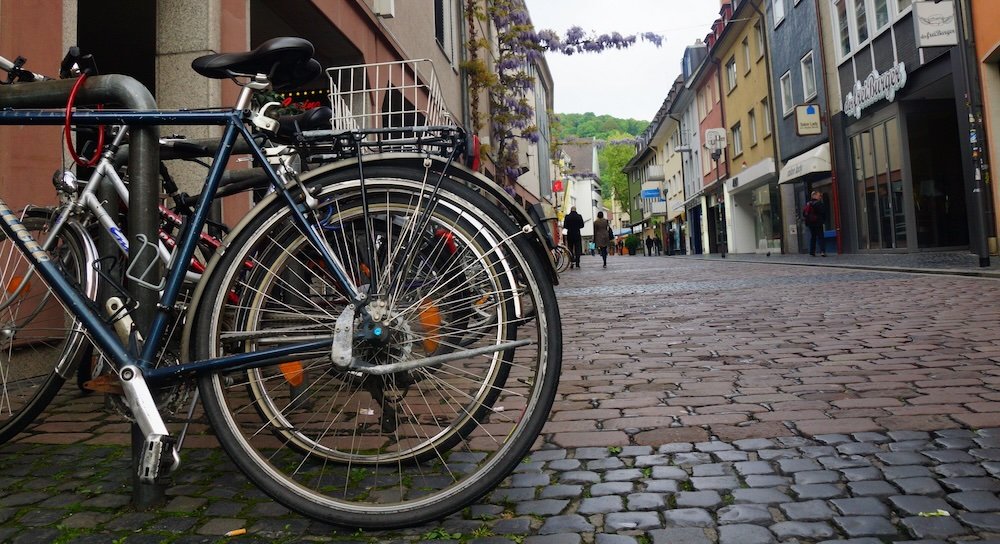
Freiburg Travel Guide: Conclusion
Freiburg is a city that combines medieval charm with modern sensibilities. At first glance, you might be drawn by its fairy-tale architecture—cobbled streets, centuries-old gates, and the majestic spire of the Münster dominating the skyline. But linger a bit, and you’ll unearth a living tapestry woven of student energy, eco-conscious planning, and a relentless love for good food and community gatherings. Each district—from the artisan-laden Old Town to the radical green experiment of Vauban—tells a story about Freiburg’s dynamic evolution.
You’ll find things to do for every taste. Culture fans can wander museums, admire street art, or trace the city’s history through guided tours. Foodies sink their teeth into hearty spätzle, indulge in airy Black Forest Cake, or clink glasses of local Pinot Noir from nearby vineyards. Outdoor enthusiasts beam at the convenience of hopping on a tram or renting a bike to access hiking trails, serene lakes, or towering mountain vistas. And for those who crave cross-border intrigue, short day trips to France or Switzerland highlight Freiburg’s place at the confluence of multiple cultures.
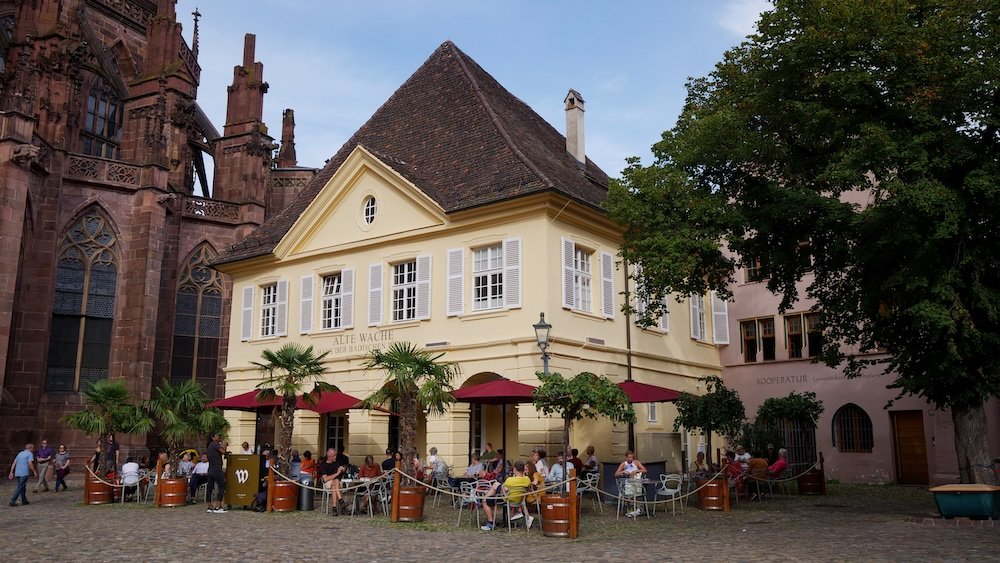
Final Thoughts
Despite its modest size, Freiburg unfolds in layers. One moment, you’re sipping coffee by the Bächle, listening to buskers in Bertoldsbrunnen. Next, you might be scaling Schlossberg for a sunset panorama, or scoping out artisan crafts at the farmer’s market near the Minster. The city’s rhythms reflect a balancing act: progressive but reverent of history, laid-back yet vibrantly engaged. Locals embrace slow living, championing bikes and public transit, while also supporting a thriving student nightlife. The result is an alluring sense of equilibrium that resonates with travelers seeking authentic, heartfelt experiences.
If you’re planning to dive into deeper Black Forest adventures—like Feldberg’s heights or Ravenna Gorge’s mossy trails—Freiburg often becomes your pivot point. You’ll find solace returning to a comfortable guesthouse or a bustling hostel after days spent exploring nature’s grandeur. That’s part of Freiburg’s gift: it welcomes you back from your wanderings with open arms, always ready to enthrall you with a new pastry find, a lively conversation in a beer garden, or a hidden mural in a quiet alleyway.
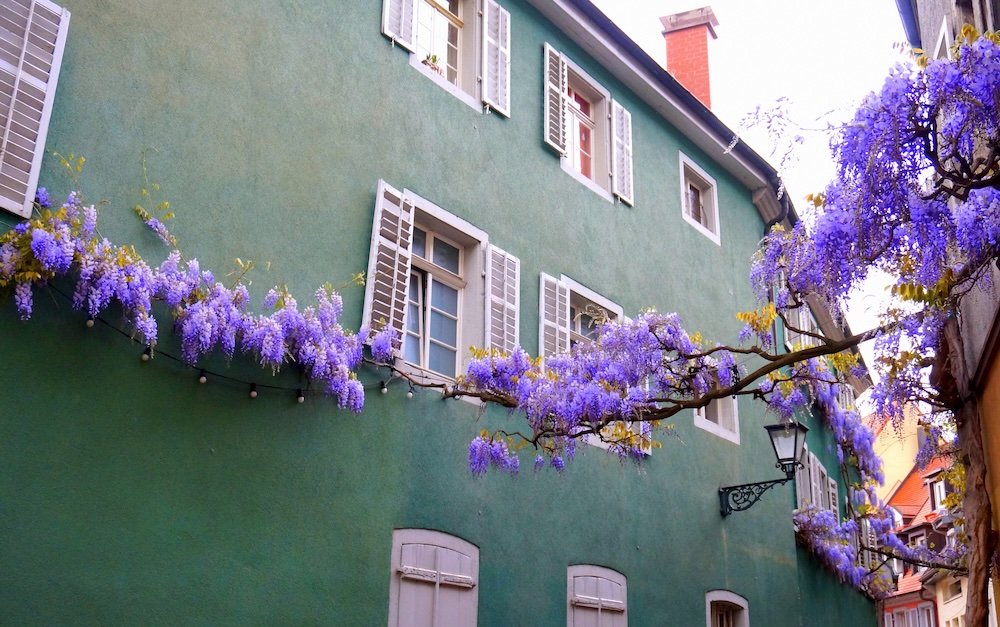
So, what’s the takeaway? Freiburg is a city that thrives on perspective. It nudges you to appreciate how old structures coexist with solar panels, how a casual café can transform a routine afternoon, how communal mindfulness yields a flourishing environment. Lean into that vibe. Safe travels!
